Day 3 – Part 2 – Lisburn Linen Museum & More
 As many of you know, I have a wee bit ‘o Irish in my heritage. My paternal great-grandfather, Robert Fairley, emigrated from Lisburn in Northern Ireland around the turn of the century. I also have two g-g-grandparents from Ireland from different sides of my family tree. So between my familial name, red-headed genes from my Dad, and family lore, being Irish was the strongest ethnic identity stressed in my childhood.
As many of you know, I have a wee bit ‘o Irish in my heritage. My paternal great-grandfather, Robert Fairley, emigrated from Lisburn in Northern Ireland around the turn of the century. I also have two g-g-grandparents from Ireland from different sides of my family tree. So between my familial name, red-headed genes from my Dad, and family lore, being Irish was the strongest ethnic identity stressed in my childhood.
So I was very pleased to have found some possible distant cousins living outside of Lisburn prior to our trip! Unfortunately, many records in Ireland were destroyed in the Irish Civil War during a bombardment and resulting fire that ravaged the building in Dublin which housed Public Records, so we haven’t yet been able to trace the exact relationship. But, considering how few Fairley’s lived in the area, it’s quite likely we have ties a few generations back. We stopped in to meet these cousins in person and then went together to lunch and the Irish Linen Centre and Lisburn Museum.
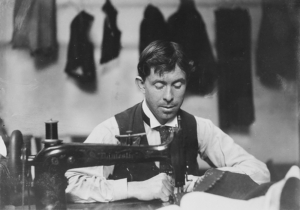
Robert McKee Fairley, my great-grandfather, at his tailoring shop in Salinas CA, c 1900.
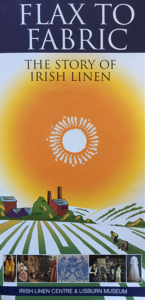
Lisburn, Northern Ireland – exhibition tracing the history of Irish Linen
The Museum’s researcher, Ciaran Toal, had kindly answered my inquiries about my family and met with me when we were there. The top floor of the museum is dedicated to their “Flax to Fabric – the Story of Irish Linen” exhibition. If you get a chance to go to Lisburn, a visit here is a must!
It starts with through the whole process of growing flax; hand harvesting & tying into parcels called”beets”; soaking the beets in water to soften the stems (a very pungent process); drying out the beets; and “Scrunching” by beating the flax stems with wooden clubs and then separating flax fibres from the unwanted woody parts of the stems. They have wonderful old photos of the each step of the process, as well as equipment used and samples.
After the flax production, the history of linen in the Lisburn area is displayed in depth, starting in 1698 when King William III appointed an Overseer of the Royal Linen Manufacture in Ireland and a weaving premises was set up in Lisburn. In the late 17th C, many immigrants from Northern England and Southern Scotland came to the Ulster region, probably including my Fairley ancestors.
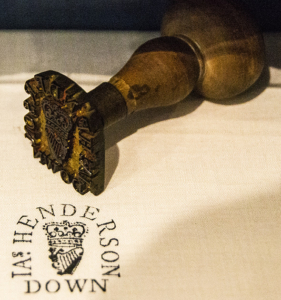
Linen seal stamped on linen to assure quality
The spinning of the flax into linen yarn or thread was mechanized in the 1820s, giving a fine quality yarn which was more reliable for weavers than hand-spun. When the linen cloth was taken from the loom, it was the original brown colour of the yarn. This was sold in “brown linen” markets. The process of bleaching brown linen yarn was complex and could last up to six months, but created a finer product. To create a lovely sheen on white linen, the bleached cloth went through a final process known as beetling, involving beating the cloth with mallets to close up the weave and achieve a dense, lustrous finish. Both brown and white linens had quality inspection processes where they had a seal used to verify the quality.
The stitching of the cloth, whether into garments or as embroidered embellishments, was the final step of the long process. While I’m not able to share any photos per agreement with the museum, I can tell you the needlework is nothing short of extraordinary! Veils of soft, semi-transparent linen gauze with incredibly fine perfect stitching; cutwork and drawn-thread work; Irish crochet lace; and much more.
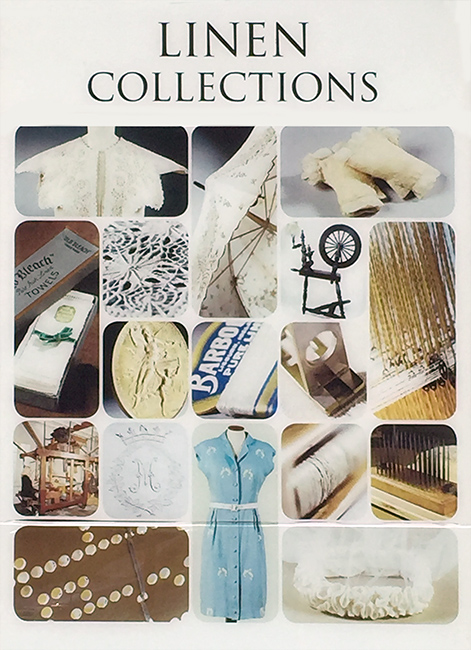 Some of the height of the collection includes pieces made for Queen Victoria, including a Golden Jubilee damask table doily from 1887 which was part of a set of 24 damask doilies depicting the new Royal Irish Linen Warehouse and a set of different miniature household items made for Queen Mary’s dollhouse! There was also information about Irish designer Sybil Connolly (1921-1998), who took inspiration from traditional Irish clothes and fabrics. Her clients included the Rockefellers, Mellons, Elizabeth Taylor, and Jacqueline Kennedy.
Some of the height of the collection includes pieces made for Queen Victoria, including a Golden Jubilee damask table doily from 1887 which was part of a set of 24 damask doilies depicting the new Royal Irish Linen Warehouse and a set of different miniature household items made for Queen Mary’s dollhouse! There was also information about Irish designer Sybil Connolly (1921-1998), who took inspiration from traditional Irish clothes and fabrics. Her clients included the Rockefellers, Mellons, Elizabeth Taylor, and Jacqueline Kennedy.
I could go on and on, but suspect I’ve probably written more than most would care to read. It was with some regret that I said good-bye to my newfound friends/cousins and to Lisburn. But, I suspect that I’ll be back sometime in the future!
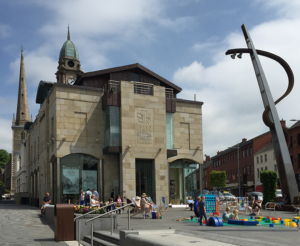
Outside of the Irish Linen Centre and Lisburn Museum
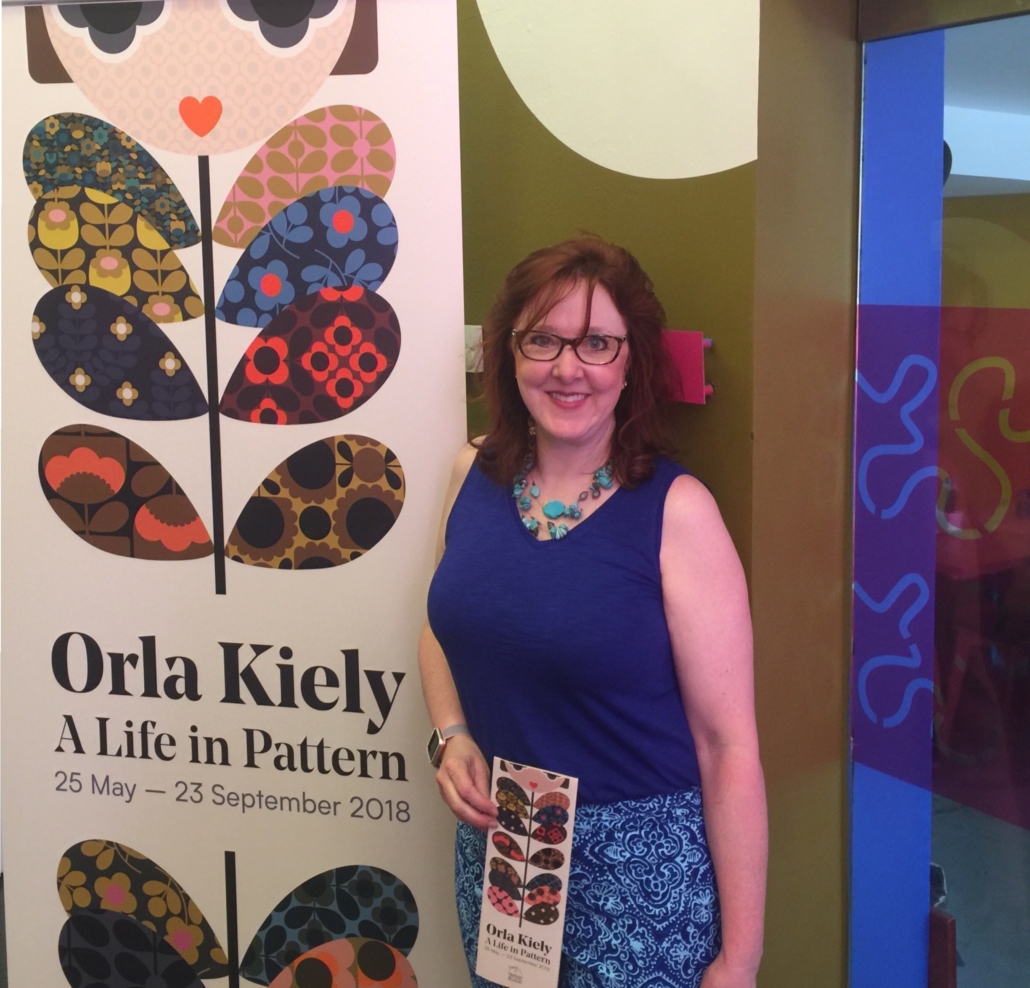
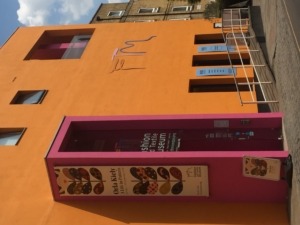 The last time I visited London, I found this wonderful little gem of a museum in the Southwark neighborhood. This visit, they are featuring the work of Orla Kiely, one of Ireland and the UK’s most famous fashion designers, a perfect blend after just completing my trip to Ireland!
The last time I visited London, I found this wonderful little gem of a museum in the Southwark neighborhood. This visit, they are featuring the work of Orla Kiely, one of Ireland and the UK’s most famous fashion designers, a perfect blend after just completing my trip to Ireland!

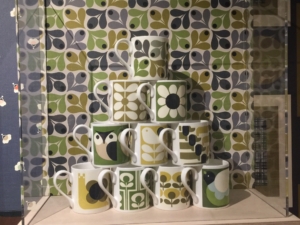
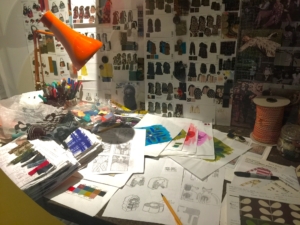
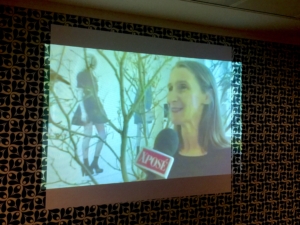

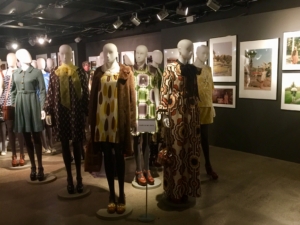




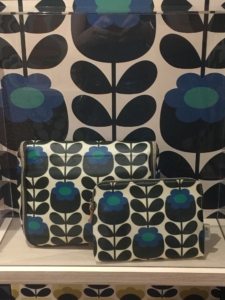
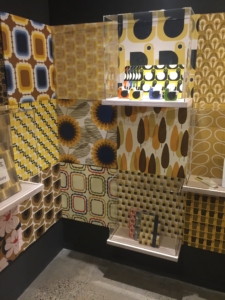



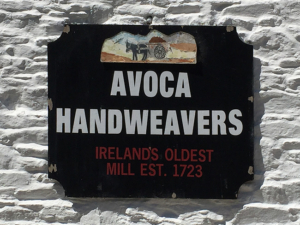
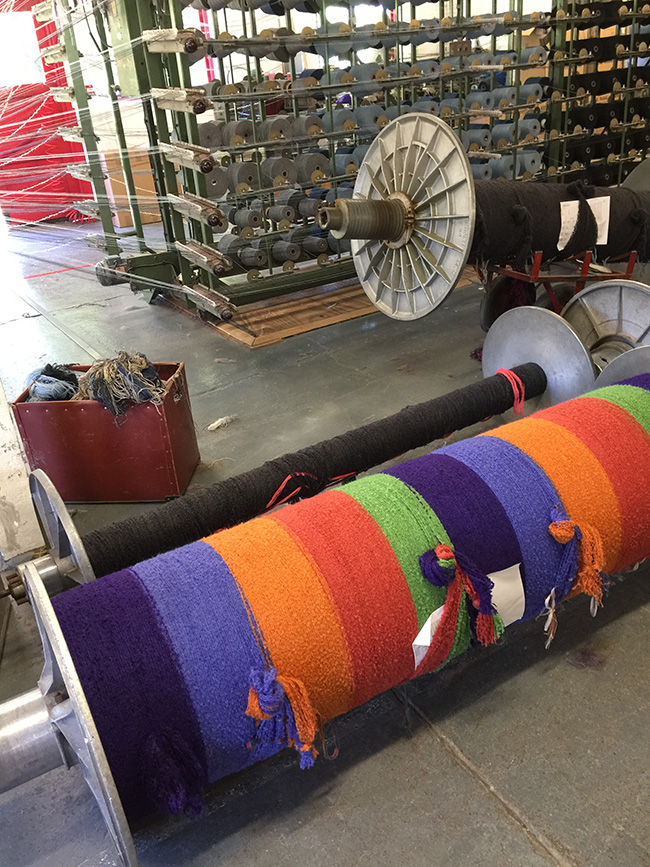


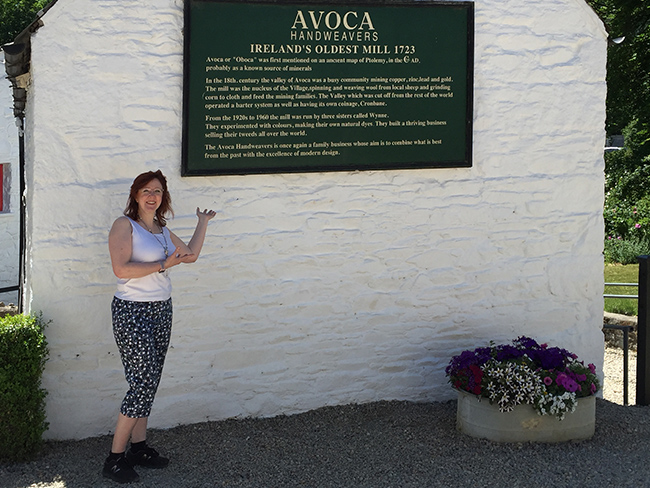
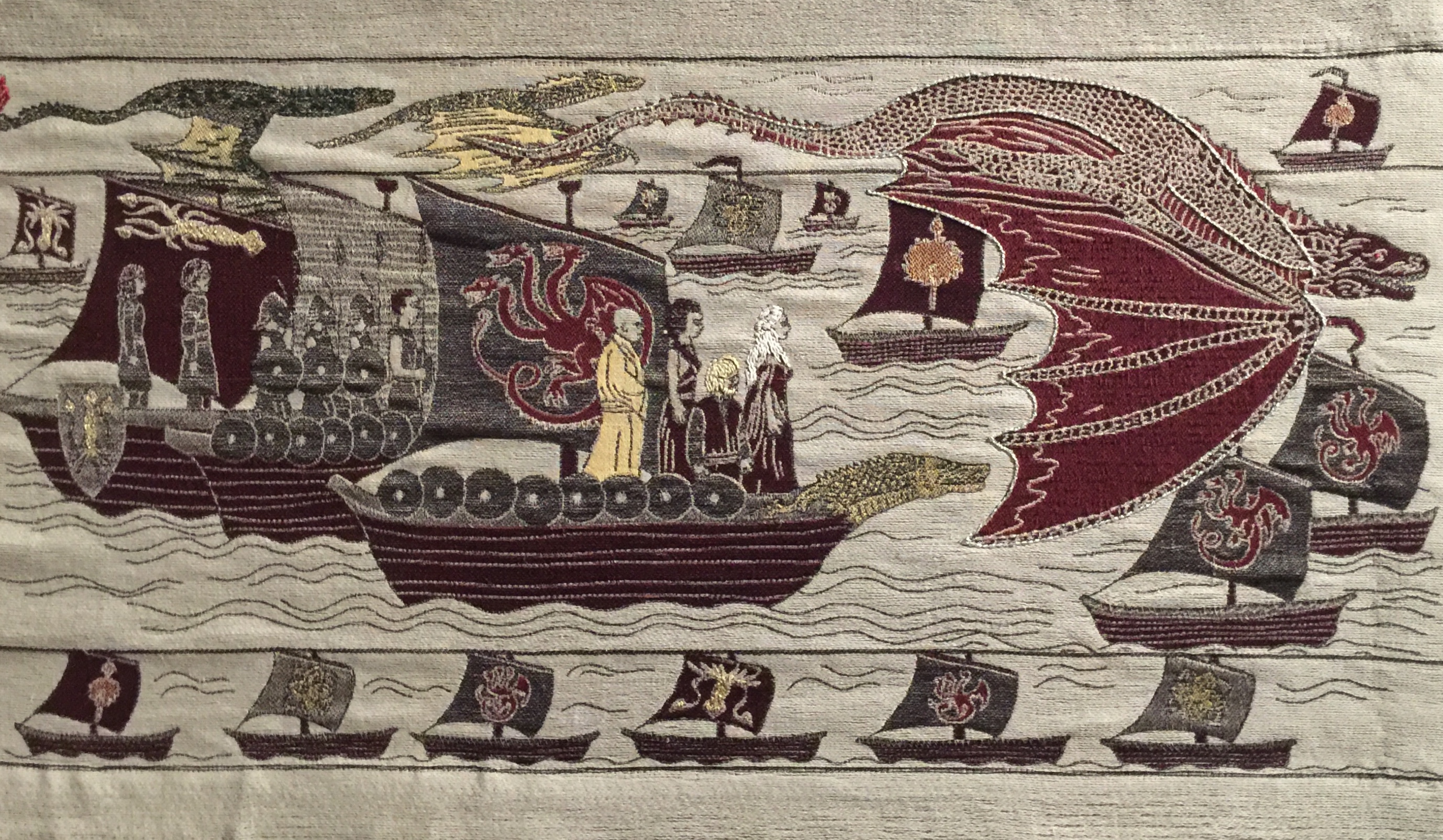 The tapestry was designed by hand by illustrators and color artists Carim Nahaboo, Jacob Merrick-Wolf, and Rob House. The weavers, Juliet Bailey, Franki Brewer, and a team at Dash & Miller in Bristol used a state-of-the-art jacquard loom. The linen thread was provided by Thomas Ferguson Irish Linen in Banbridge, one of the last surviving mills in Northern Ireland, and contains over 250,000 threads placed by hand.
The tapestry was designed by hand by illustrators and color artists Carim Nahaboo, Jacob Merrick-Wolf, and Rob House. The weavers, Juliet Bailey, Franki Brewer, and a team at Dash & Miller in Bristol used a state-of-the-art jacquard loom. The linen thread was provided by Thomas Ferguson Irish Linen in Banbridge, one of the last surviving mills in Northern Ireland, and contains over 250,000 threads placed by hand.




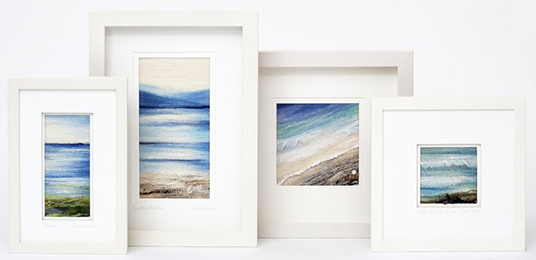
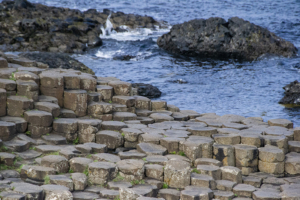

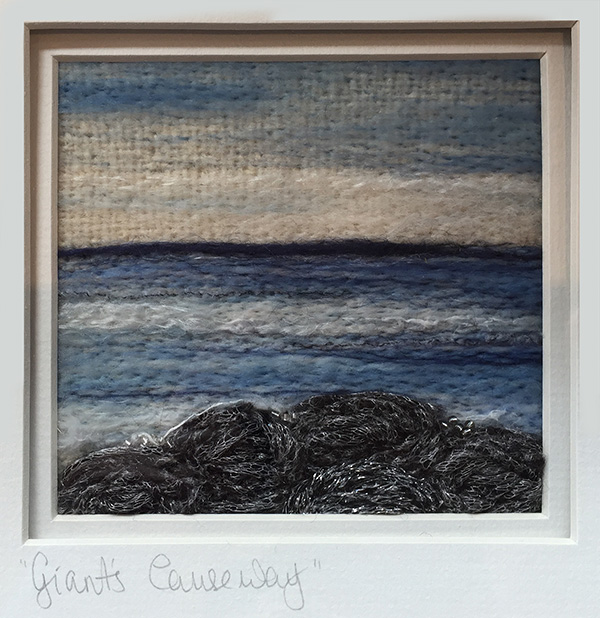
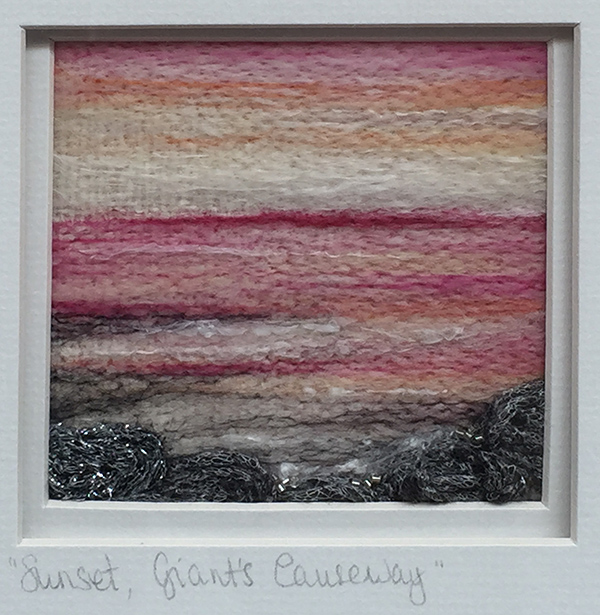

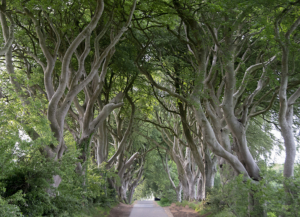
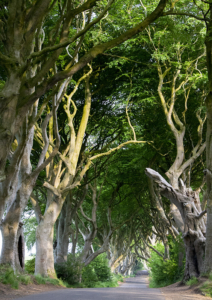
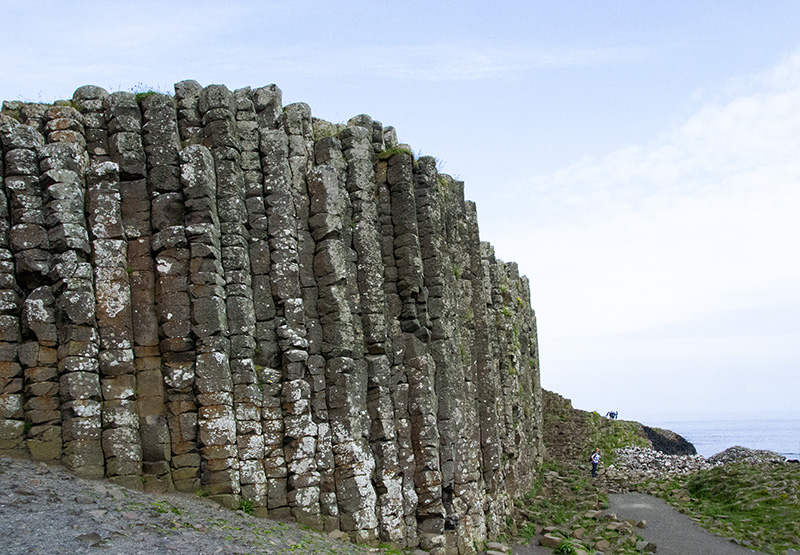
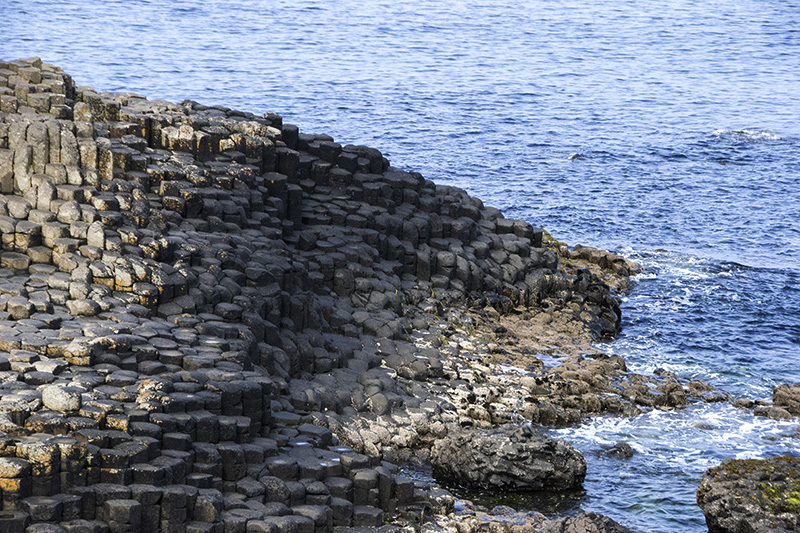


 As many of you know, I have a wee bit ‘o Irish in my heritage. My paternal great-grandfather, Robert Fairley, emigrated from Lisburn in Northern Ireland around the turn of the century. I also have two g-g-grandparents from Ireland from different sides of my family tree. So between my familial name, red-headed genes from my Dad, and family lore, being Irish was the strongest ethnic identity stressed in my childhood.
As many of you know, I have a wee bit ‘o Irish in my heritage. My paternal great-grandfather, Robert Fairley, emigrated from Lisburn in Northern Ireland around the turn of the century. I also have two g-g-grandparents from Ireland from different sides of my family tree. So between my familial name, red-headed genes from my Dad, and family lore, being Irish was the strongest ethnic identity stressed in my childhood.


 Some of the height of the collection includes pieces made for Queen Victoria, including a Golden Jubilee damask table doily from 1887 which was part of a set of 24 damask doilies depicting the new Royal Irish Linen Warehouse and a set of different miniature household items made for Queen Mary’s dollhouse! There was also information about Irish designer Sybil Connolly (1921-1998), who took inspiration from traditional Irish clothes and fabrics. Her clients included the Rockefellers, Mellons, Elizabeth Taylor, and Jacqueline Kennedy.
Some of the height of the collection includes pieces made for Queen Victoria, including a Golden Jubilee damask table doily from 1887 which was part of a set of 24 damask doilies depicting the new Royal Irish Linen Warehouse and a set of different miniature household items made for Queen Mary’s dollhouse! There was also information about Irish designer Sybil Connolly (1921-1998), who took inspiration from traditional Irish clothes and fabrics. Her clients included the Rockefellers, Mellons, Elizabeth Taylor, and Jacqueline Kennedy.